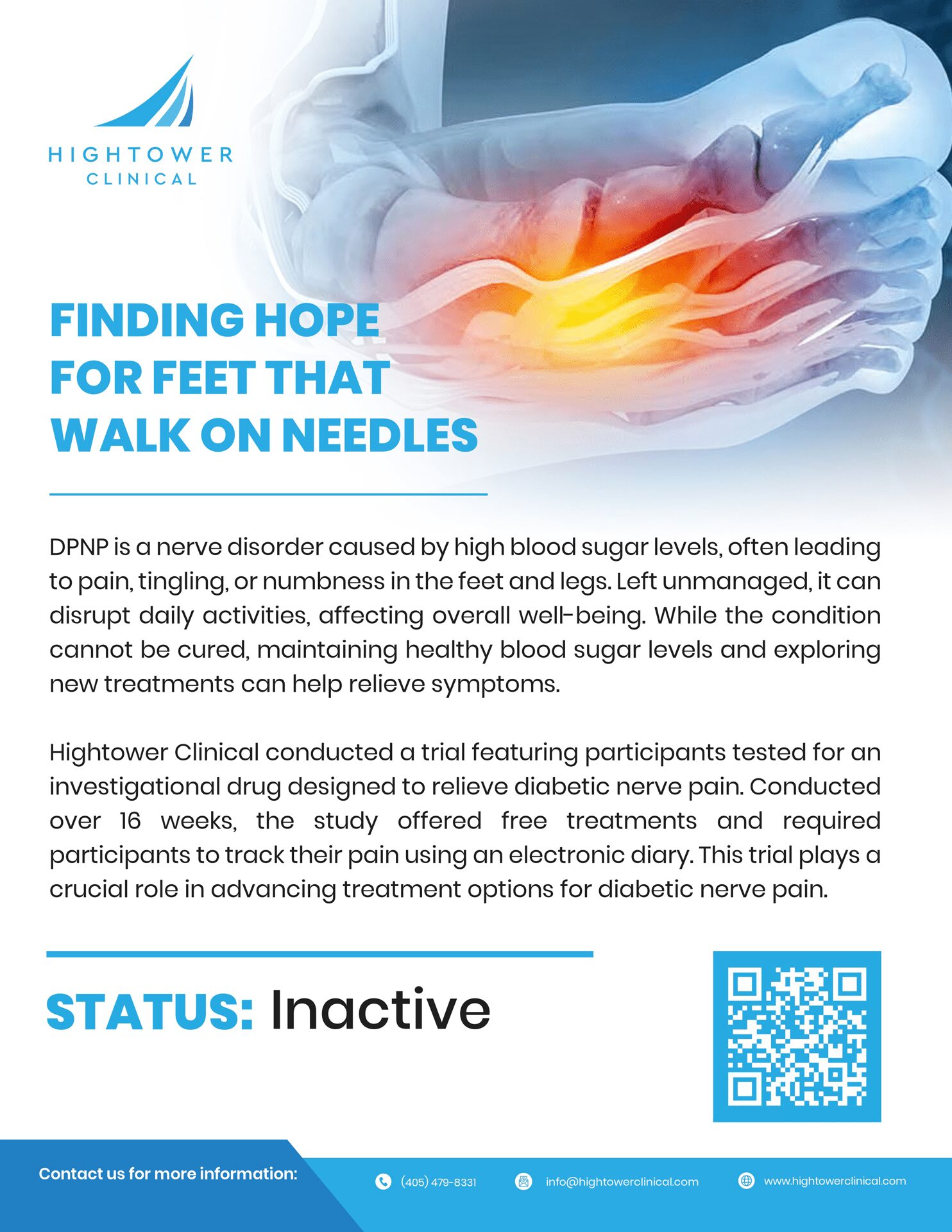High blood sugar levels over time can damage the nerves, leading to diabetic neuropathy. Poor blood circulation, high cholesterol, and smoking may also contribute to nerve damage.
Diabetic Peripheral Neuropathic Pain
Hightower Clinical is committed to driving progress in treating diabetic peripheral neuropathic pain and improving patient care globally.
About Diabetic Peripheral Neuropathy (DPNP)
Diabetic Peripheral Neuropathy (DPNP) is a common complication of diabetes, affecting the nerves in the legs and feet due to prolonged high blood sugar. It causes burning sensations, tingling, stabbing pain, or numbness in the extremities, which can severely impact daily life. While there is no cure, managing blood sugar and exploring innovative treatments can alleviate symptoms and improve quality of life.
Current Status
Not Recruiting
Study Count
01
Frequently Asked Questions
Who is at risk of developing diabetic peripheral neuropathy?
People with type 1 or type 2 diabetes, especially those with poorly controlled blood sugar levels, are at higher risk. Other risk factors include long-term diabetes, obesity, smoking, and high blood pressure.
Can diabetic peripheral neuropathy be cured?
There is no cure for diabetic peripheral neuropathy, but its symptoms can be managed. Managing blood sugar levels and adopting a healthy lifestyle can slow its progression and reduce pain.




